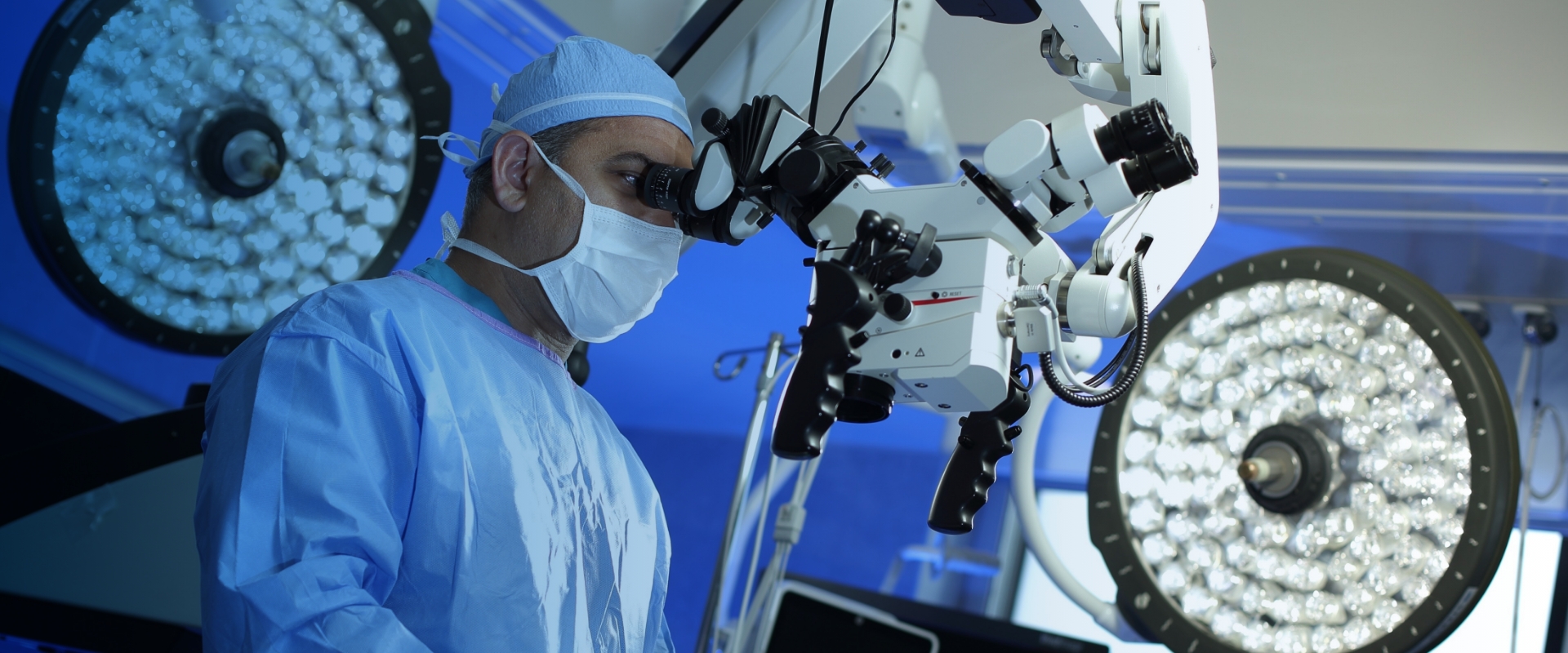What You Need to Know About Our Neurovascular Treatment Center
Strokes, brain aneurysms, and arteriovenous malformations (AVMs) are often life-threatening conditions that require subspecialized, urgent care. As one of the highest-volume, most sophisticated neurovascular centers in the mid-Atlantic, our board-certified neurosurgeons and multidisciplinary team provides 24/7 evaluation and treatment for over 700 patients with these conditions each year.
Over 90% of the time, we treat patients who need to undergo a procedure using minimally invasive treatment options. Below, we address everything you need to know about our Neurovascular Treatment Center.
What do they treat at Neurovascular Treatment Centers? What is a neurovascular condition?
A neurovascular condition refers to disorders affecting the blood supply in the spinal cord or brain, which impacts neurological functions.
Blood flow can be affected by:
- Hardening, narrowing, or an abnormality of the blood vessels
- A blockage caused by an embolism or clot
- Bleeding from a ruptured blood vessel
Examples of neurovascular conditions include strokes, brain aneurysms, and arteriovenous malformations (AVMs).
What are the symptoms of a neurovascular condition?
In the early stages, some neurovascular conditions do not cause any symptoms. However, symptoms may begin to appear as the condition changes or worsens. Meanwhile, other neurovascular conditions can cause very severe, sudden symptoms requiring emergency treatment.
Symptoms of neurovascular conditions may include:
- Loss of coordination
- Feeling dizzy
- Trouble walking or keeping balance
- Change in mental status
- Confusion
- Inability to speak or understand speech
- Weakness, numbness, or paralysis in the arms or face
- Sudden, severe headache
How is a neurovascular condition diagnosed?
To diagnose a neurovascular condition, your doctor will review your medical history, evaluate your symptoms, and perform and/or order tests, including:
-
- Physical Examination: Your doctor will assess your coordination, balance, and mental alertness. In addition, your doctor will also check other symptoms, such as weakness, numbness, or paralysis in your face, legs, or arms.
- CT Scan: A CT scan of your brain will help determine if there is a blockage, bleeding, or abnormalities.
- MRI: An MRI of your brain may be ordered to help determine whether there are abnormalities in your brain.
- Carotid Ultrasound: This ultrasound can show plaque buildup or the blockage of your carotid arteries.
- Cerebral or Carotid Angiogram: This test checks for signs of hemorrhaging or blockage in the arteries in your neck and/or brain.
How is neurovascular disease treated?
Specific treatment options will depend on the type of neurovascular condition. Treatment may include the following:
- Medication: Tissue plasminogen activator (tPA) helps to break apart clots and restore blood flow to the brain. Depending on the condition, your healthcare provider may also prescribe blood thinners or other medications to control symptoms.
- Minimally Invasive Procedures: This includes endovascular coiling, which blocks or plugs a ruptured aneurysm with a small metal coil. Stenting can be used to treat a blocked or narrow blood vessel, and may also be used to treat a brain aneurysm.
- Surgical Intervention: Surgical procedures may be used depending on the specific condition. Surgical AVM and cavernous malformation removal and repair involve removing the AVM and fixing the deformities in the blood vessels that caused the condition to develop.
What is the neurovascular treatment for intracranial aneurysms?
Standard treatments for intracranial aneurysms include surgical clipping, where the aneurysm is isolated from the blood circulation, and endovascular coiling, which fills the aneurysm with coils to prevent rupture.
Surgical clipping, a type of microsurgery, involves using a metal clip to close off an aneurysm in the brain. The clip can effectively cut off blood flow from the artery to the aneurysm.
Endovascular coiling is a procedure in which a small coil is placed in the aneurysm to block blood flow and prevent the aneurysm from rupturing. In addition, neurosurgeons may use coiling or liquid embolic “glue” as a treatment option for an arteriovenous malformation (AVM). The coil or glue causes the blood to clot and seals off flow to the abnormal area.
Which of the following is a neurovascular disorder?
Common examples of neurovascular disorders include stroke, intracranial aneurysms, arteriovenous malformations (AVMs), and carotid artery stenosis.
- A stroke occurs due to a disruption in blood supply to the brain, which can be due to a blockage or a rupture.
- An intracranial aneurysm refers to the abnormal bulging in a weakened blood vessel of the brain, which can rupture and cause severe bleeding.
- AVMs are abnormal connections where blood moves directly from an artery to a vein bypassing the capillaries that typically slow blood flow. The disruption to normal circulation prevents the surrounding brain tissue from absorbing enough oxygen and can weaken vessels resulting in bleeding.
- Carotid artery stenosis refers to the narrowing of the carotid arteries, which is oftentimes due to the buildup of plaque on the artery walls. This restricts blood flow to the brain and increases the risk of stroke.
These conditions can have significant neurological consequences depending on their severity and location. That is why timely diagnosis and intervention are crucial for managing these disorders and preventing long-term complications. Get expert neurovascular care—schedule a consultation with our specialists today.

